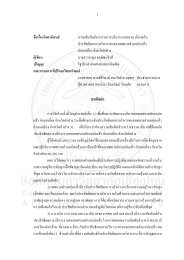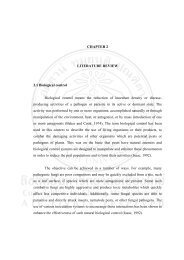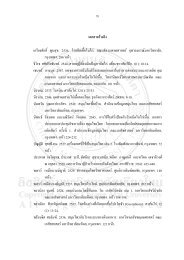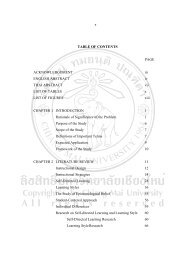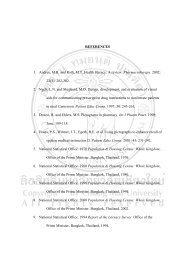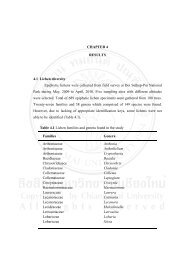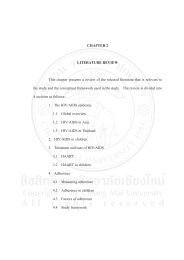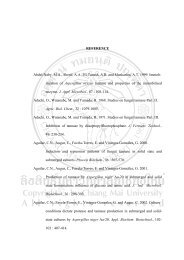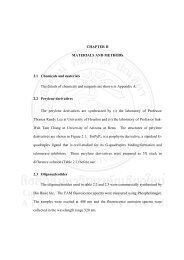Chapter Four
Chapter Four
Chapter Four
You also want an ePaper? Increase the reach of your titles
YUMPU automatically turns print PDFs into web optimized ePapers that Google loves.
38<br />
2.12.3 Importance of Magnoliaceae<br />
The family is important as an ornamental plant, used as gardening value, and<br />
as herbal plant that can produce some medicinal substances (magnoloid…etc). Bark,<br />
leaf, and fruit teas have been used to treat fevers, rheumatism, and stomach ailments.<br />
The bark from M. officinalis has long been used in traditional Chinese medicine,<br />
where it is known as houpu. In Japan, M. obovata has been used in a similar manner.<br />
The aromatic bark contains magnolol and honokiol, two polyphenolic compounds that<br />
have demonstrated anti-anxiety and anti-angiogenic properties. Magnolia bark also<br />
has been shown to reduce allergic and asthmatic reactions (wikipedia website).<br />
2.13 Fungi on Magnoliaceae<br />
Several studies on the family Magnoliaceae have been investigated, including<br />
morphological systematics (e.g. Maneval, 1912; Roever, 1937; Canright, 1949),<br />
molecular systematics (e.g. Sewell, 1992; Qiu, 1993; Cevallos-Ferriz, 1990, Azuma et<br />
al., 2001; Kim et al., 2001) and phytochemical study (Wilton, 1982; Song, 1995).<br />
However, only few works have focused on fungi on Magnoliaceae (Ahn, 1996,<br />
Promputtha et al., 2002, 2003, 2004a, b, c; 2005b, Kodsueb et al., 2004a, 2006c,<br />
2007b).




